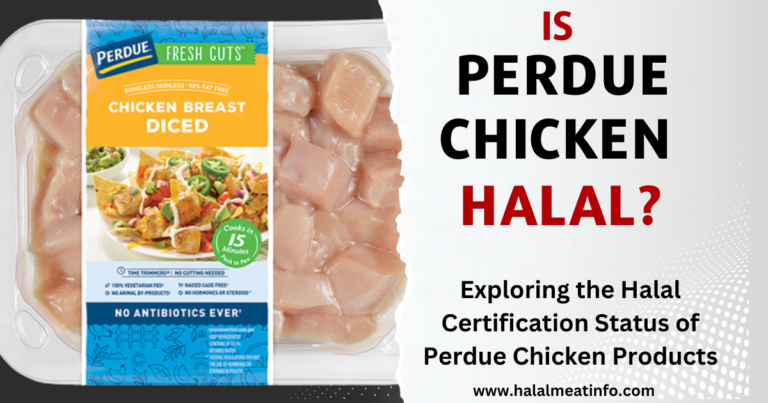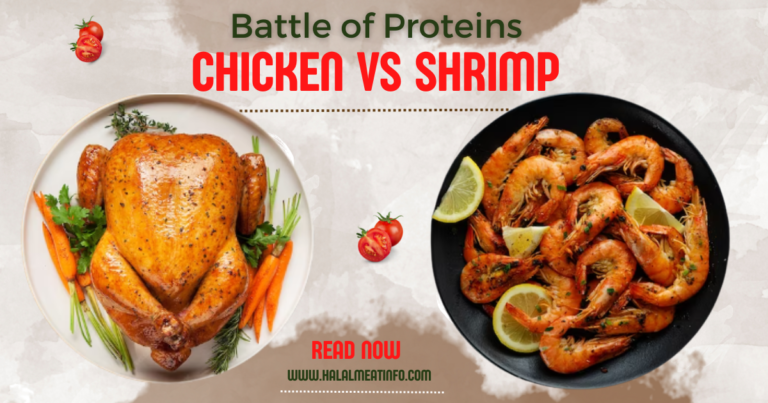White Meat vs Dark Meat Chicken: Unraveling Nutritional Mysteries
When it comes to choosing between white meat and dark meat chicken, the decision often depends on individual preferences, dietary needs, and culinary applications. The ongoing debate of “white meat vs dark meat chicken” is based on the difference in taste and the contrasting nutritional profiles of these two types of meat present. This comprehensive guide aims to shed light on these differences, helping you make an informed choice for your next meal.

Introduction
Chicken, a staple in many diets worldwide, is often divided into white and dark meat cuts. But have you ever wondered about the nutritional differences between these two types? How do they affect your health, and how do they impact your culinary creations? In this blog post, we’ll explore white and dark chicken meat’s nutritional profiles, comparing their protein, fat, vitamin, and mineral concentrations. We’ll also touch upon the culinary applications of each, allowing you to make an informed decision for your next kitchen adventure. Let’s embark on this poultry journey together, gaining insights that might transform your next meal plan.
Understanding the Basics
Before we dive into the nutritional differences between white and dark chicken meat, let’s start by understanding the basics. The classification of chicken meat into ‘white’ and ‘dark’ is primarily based on the type of muscle the meat comes from. White meat is derived from the lean, fast-twitch muscles in the chicken’s breasts and wings. These muscles are used for quick bursts of activity, hence having less fat and fewer myoglobin cells, giving the meat its ‘white’ appearance. On the other hand, dark meat comes from the chicken’s legs and thighs, which are slow-twitch muscles used for sustained activity. This muscle type has more myoglobin cells and a higher fat content, resulting in a darker color and a richer, more robust flavor. With these basics in mind, let’s delve into the specific nutritional differences that set these two types of chicken meat apart.
Nutritional Differences: White Meat vs Dark Meat Chicken
Understanding the nutritional differences between white and dark chicken meat allows us to make informed dietary choices that align with our health goals.
Protein Content
Both white and dark meat chicken are excellent sources of high-quality protein. However, white meat holds a slight edge. A 100g serve of skinless chicken breast offers around 31g of protein, while an equivalent portion of skinless chicken thigh provides roughly 26g [1].
Fat Content
When it comes to fat content, dark meat has a clear advantage over white meat. A 100 gram serving of dark chicken contains 3.57 grams of fat, while the same amount of white meat only offers 3.5 grams [1]. This difference in fat content also contributes to their taste since fat helps add flavor and moisture to dishes.
Vitamin and Mineral Concentrations
Interestingly, dark meat showcases a richer micronutrient profile. It has higher amounts of iron, zinc, riboflavin, thiamine, and vitamins B6 and B12 compared to white meat [2]. However, white meat is a superior source of niacin, an essential vitamin for energy production and brain function [3].
Taste and Texture of White Meat vs Dark Meat
Flavor Profile
In terms of taste, dark meat surpasses white meat because of its elevated fat content, providing a more flavorful and savory experience. On the other hand, white meat has a milder taste, making it a versatile base for a wide array of spices and sauces.
Texture
Dark meat, found in the chicken’s legs and thighs, is more tender and juicy due to its higher fat content and the fact these muscles are used more frequently. In contrast, the white meat, found primarily in the breast and wings, has a firmer and denser texture.
Moistness
The higher fat content in dark meat also contributes to its moistness. When cooked properly, it remains juicy and succulent. On the other hand, white meat can dry out quickly if overcooked, but when prepared correctly, it should be tender and moist.
Overall Palatability
Owing to its richer flavor, moistness, and tenderness, many people prefer the taste and texture of dark meat. However, white meat’s mild flavor and firm texture make it a hit with others, especially when it forms the basis for dishes where other flavors take center stage. As with the nutritional aspects, your choice between white and dark meat may ultimately come down to personal preference and your intended dish’s culinary needs.
Health Implications of White Meat vs Dark Meat
Understanding the health implications of consuming white and dark chicken meat can guide us toward healthier food choices.
Cardiovascular Health
While moderate consumption of white or dark meat doesn’t significantly impact cardiovascular health, overconsumption of dark meat with its higher saturated fat content could raise cholesterol levels [4]. However, white and dark chicken meats are leaner than red meat, which is typically higher in saturated fats.
Weight Management
If you’re trying to lose weight, white meat might be a better choice with its lower fat content. Lean protein, like that found in chicken breast, can help you feel full longer, thus helping control hunger and aid in weight loss [5].
Diabetes Risk
Some research suggests that eating a lot of red and processed meats can increase the risk of type 2 diabetes [6]. However, substituting one serving of red meat with poultry is associated with a 17% lower risk of this disease.
Iron Deficiency
Dark meat serves as a valuable source of iron, a mineral essential for the production of red blood cells [2]. Picking dark meat over white could help prevent iron deficiency anemia, particularly for those who don’t consume red meat.
Mental Health
Both types of chicken meat are rich in vitamin B6, a nutrient associated with brain development and function, potentially reducing the risk of depression [3].
Cooking Differences: White Meat vs Dark Meat
Due to their distinct textures and flavor profiles, white and dark meat require different cooking techniques. White meat, being leaner, cooks more quickly and can become dry if overcooked. It’s best suited to roasting, grilling, or sautéing methods, which employ higher heat and shorter cooking times. Conversely, dark meat is more forgiving and can withstand longer cooking without losing its juiciness or flavor. This makes it ideal for slow cooking, braising, or stewing. These methods allow the higher fat content to render out gradually, infusing the meat with flavor and keeping it moist. Both types can produce delicious results when cooked properly, but understanding these key differences can help optimize culinary creations.
FAQ’s
Dark meat chicken refers to the meat from the legs, thighs, and wings, which is darker in color and contains more fat. White meat chicken comes from the breast and is lighter in color with less fat.
Dark meat chicken has a slightly higher calorie and fat content compared to white meat, but it compensates by offering more iron and zinc. When consumed in moderation and prepared with healthy cooking methods, both types of chicken can be part of a balanced diet.
Dark meat is often more succulent and flavorful than white meat, mainly because of its higher fat content.
Yes, white meat and dark meat can be used interchangeably in most recipes. However, it’s essential to consider that cooking times can vary because of variations in fat content and thickness.
White meat is well-suited for quicker cooking methods like grilling, baking, or stir-frying, while dark meat benefits from longer, slower cooking methods such as braising or roasting to tenderize and enhance its rich flavor.
Conclusion
In summary, white and dark chicken meats have unique characteristics, nutritional values, and culinary applications. White meat, with its mild flavor and lower fat content, is versatile and can be a beneficial addition to weight management or heart-healthy diet. Dark meat, on the other hand, provides a richer flavor and contains higher amounts of certain vitamins and minerals. It can be an excellent choice for those seeking to prevent iron deficiency or simply craving a more flavorful option. Understanding these distinctions can enhance your culinary endeavors, allowing you to select the best option based on your dietary needs and flavor preferences. Ultimately, a balanced diet incorporating a variety of proteins, including both white and dark chicken meat, can support overall health and well-being.
References
- U.S. Department of Agriculture, Agricultural Research Service. 2021. Food Data Central. Link
- Williams, Juhi & Roseland, J.M. & Howe, J.C. & Patterson, K.Y. & Thompson, Donovan & Luna, A.M.. (2014). Nutrient comparison for enhanced and non-enhanced dark meat chicken. Meat Science. Link
- Niacin: MedlinePlus Medical Encyclopedia Link
- Milićević D, Vranić D, Mašić Z, Parunović N, et al (2014). The role of total fats, saturated/unsaturated fatty acids and cholesterol content in chicken meat as cardiovascular risk factors. Link
- Marangoni F, Corsello G, Cricelli C, et al (2015). Poli A. Role of poultry meat in a balanced diet aimed at maintaining health and wellbeing: an Italian consensus document. Link
- Pan A, Sun Q, Bernstein AM, et al (2011). Red meat consumption and risk of type 2 diabetes: 3 cohorts of US adults and an updated meta-analysis. Link
- Ali M, Lee SY, Park JY, Jung S, Jo C, Nam KC (2019). Comparison of Functional Compounds and Micronutrients of Chicken Breast Meat by Breeds. Link






